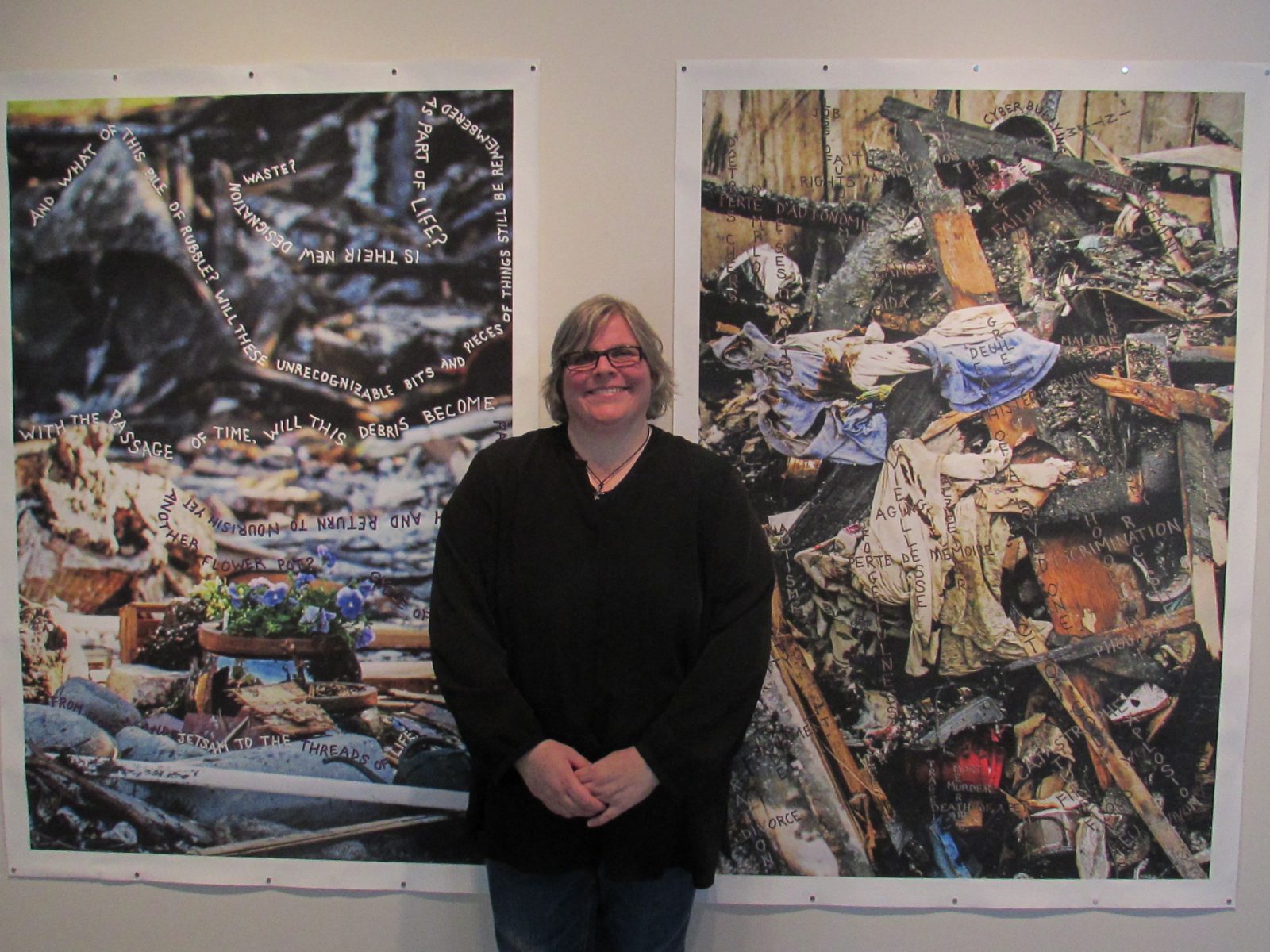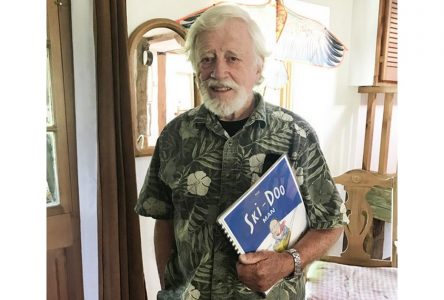For an artist, a path is never certain.
The ability to draw from excruciatingly personal experiences to create a song, an image or a turn of phrase capable of provoking emotions common to all people is a rare gift.
To be able to do all three is even more rare.
Kate Morrison, known to many as a singer songwriter, recently completed a newly developed masters level program at the University of Sherbrooke, Diplôme en Pratiques Artistiques Actuelles. She now considers herself a multi-disciplinary artist, and is currently part of a group show, Souvenirs Vivants, at the Maison des Arts et de la Culture de Brompton.
Morrison sat down with The Outlet to discuss her new show, and explain how her move into mediums beyond music is both an expansion and an evolution of her expression as an artist.
“ I thought I was going to be approaching my project from a musical perspective,” Morrison said, when she first entered the University of Sherbrooke program.
Morrison said the program, in which she was among the first wave of students to enrol, looked at terms and concepts in art, and studied the process and perspectives of many different artists.
“ It was more theoretical than anything else,” she said.
“I was always interested in photography,” she said, referring to a very personal collection of photographs that had been tucked away in a drawer since 2002.
During her studies, Morrison, who in the past had expressed herself through music, revisited the photos from a different perspective and decided to take a new artistic approach, but through visual arts.
“It’s not a parallel thing to be a singer songwriter and be a visual artist,” Morrison said. “Those things are linked together through words.”
Morrison developed a style she refers to as cartographic writing, where words and other elements are superimposed on her photographs, mapping out the narrative.
“The writing became the path to express grief, or the story of the picture.”
Morrison’s contribution to the group exhibition at the MACB, called The Space-Territory of Grief, was developed from artefacts recuperated from a traumatic event in her life.
In 2002, her parents’ home in Summerland, BC was razed by a spontaneous natural gas explosion.
When Morrison returned to the scene of the explosion, she had her camera with her.
“It was kind of like a veil between my feelings and what I was seeing,” she said. “I never thought I would use them,” Morrison added, ultimately coming back to them 12 years later.
“When you look at this exhibition, other people see debris. I see childhood memories; I see a piece of clothing that my mom wore. I see bricks from my chimney that remind me of the fireplace at Christmas,” she said.
Embedded in one of the photos of the remains of the home are ‘cross words,’ as Morrison put it, offered as triggers for other peoples’ interpretation of grief. Words like divorce, discrimination, cyber bullying intersect across the large-scale image.
“I always try to have a positive perspective in everything,” Morrison said, pointing out that although some of the imagery is intense, there is a message of resilience.
She referred to a large ornate chair covered in blue velvet, along the wall near the centre of the room.
The chair was part of a set belonging to her Grandmother, one gentleman’s chair and one lady’s chair. When her grandparents passed away, the chairs moved to her parents house.
When she was young, the chairs were always off limits to Morrison. When she got older, she asked her mother if, one day, she could have the lady’s chair. Her mother wrote Kate’s name on a piece of masking tape and taped it to the underside of the chair.
Following the explosion, Morrison happened upon the remnants of the chair, broken and burned. She loaded it into a truck and drove it back across the country. She eventually found a cabinetmaker and an upholsterer to restore it.
“It took a little over a year to get it back to its semi-original state,” Morrison said.
The chair sits on top of a photo of how it looked after the explosion. A transparent sheet with writing is laid over top of it, describing the worst three days of that chair’s life.
“After loss, you have to get back up on your feet, no matter what.”
Another striking piece in the collection is the top of her parents’ piano. Morrison took a photo she had of one octave of the keyboard, and photo shopped and resized it to stretch the length of the piano top. She then wrote out the lyrics of a verse from her song, Look up at the Moon, from her album Kiss the Sky on the piano keys.
Music is still on the horizon for Morrison. She began recording an album last fall, and hopes to finish this year.
Morrison’s last studio album was released in 2007, but she has since participated in a number of musical projects, lending her name and voice to causes she supports.
Though she admitted she was less on the scene in recent years, she believes what she learned in her recent study program will be reflected in her music.
“It was just a question of timing and things happening in my life,” Morrison said,
“Hopefully it will help me compose better and integrate different aspects into my songs.”
Going forward, Morrison sees her transformation into a multi-disciplinary artist as an evolution and an expansion.
“I have more freedom to be able to express myself in all these different ways,” she said.
“I hope people will accept the transition,” she went on to say. “Both are important to me. They are a reflection of who I am,” Morrison said.
“A song can mean something different to everybody,” Morrison added, explaining that it is the same everywhere in art.
“You find out what you want to say, and then you find a way to say it,” she said, adding that the purpose for her is to create a connection to an experience that is universal.
Morrison’s exhibition will be at the Maison des Arts et de la Culture de Brompton, located at 1 Rue Wilfred-Laurier in Sherbrooke, until Oct. 11.
Visit Morrison’s website, www.katemorrison.ca for more information.
The evolution of an artist






